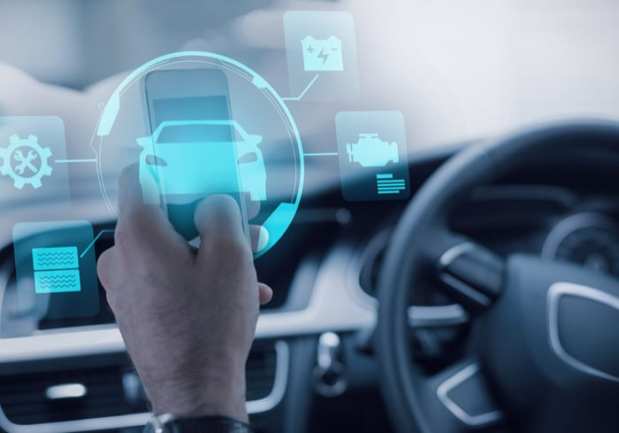Shopping While Driving Gains Traction

Voice-activated commerce has been the key to connecting commuters. These in-car shoppers spent $230 billion last year and with new retail initiatives and mobile features, this figure is set to increase in 2019.
Mobile commerce used to mean ordering via smartphones and other mobile devices, but increasingly it can also apply literally to consumers using the internet to shop in connected cars — i.e. connected or contextual commerce.
It makes sense when the average American spends nearly one hour (51 minutes) roundtrip commuting. Drivers could be forgiven for trying to squeeze in a few productive tasks while behind the wheel. And the concurrent rise of voice commerce has enabled this behavior.
According to a December 2018 P97 Networks and PYMNTS study, Digital Drive, those in-car tasks really add up: connected commuters are generating $230 billion, a rise of 8 percent year-over-year.
In-home and smartphone voice assistants have become mainstream — 27 percent of consumers own a voice-controlled assistant — so in-car usage is a natural extension.

Commuters use a variety of methods to stay connected. The most common in Q4 2018 was connecting via a smartphone (58.7 percent) while just under half (49.2 percent) used this method in Q4 2017.

What are these connected commuters doing? The number one activity probably won’t come as a surprise. Close to half (47.2 percent) are finding gas stations. Other popular activities include ordering food, coffee and groceries for pick-up either at a drive-through or at a store or restaurant. Less common is ordering food on-the-go to be delivered, which makes sense. If a consumer owns a car, they might not see the value in paying for delivery.
The average commuter ordered drive-through coffee while driving 65 times in 2018, which shows that this type of commerce is primarily motivated by convenience and the ease of completing the task. For comparison, connected commuters ordered groceries 35.7 times.
Supermarkets have offered mobile features like stored shopping lists to make re-ordering items easier, and Amazon has long stored past orders and suggested related products, which extends to voice commerce.
Most consumers use their device and a voice assistant (36.3 percent) in-car. Car-integrated voice-usage is less common (10.2 percent). But as more car manufacturers offer this option, it will likely see more mainstream adoption.
The most-used voice assistant among commuters was Siri, which reflects the popularity of Apple devices, followed by Google Assistant, which makes sense considering the popularity of Google Maps, an obvious navigation aid. Alexa, the only commerce-focused assistant, was used by roughly one in five commuters.

When comparing activities conducted among the different assistants, Google Assistant was used for a broader range of tasks, from finding gas stations to ordering coffee. One surprising finding in this study was that even though a majority of the respondents were Amazon Prime members, Google Assistant dominated in-car usage, not Alexa.
While Alexa thrives in-home through the myriad devices Amazon sells, it has yet to make itself integral to users’ daily commutes.
Last year, Amazon enabled Alexa to be integrated by automakers and has been offering an Echo Auto device that is manufacturer-agnostic.
When it comes to connected commerce, the same friction points — and solutions — exist as with mobile commerce. Anything that improves the user experience and makes transacting easier is a selling point. And that is why apps are the most common way to pay for purchases in-car. In the study, 64 percent had downloaded an app to assist in making a purchase. And car-connected drivers downloaded apps more (82 percent) than device-connected drivers (68.8 percent).
Half (50.7 percent) used apps to make purchases, but accessing loyalty and rewards programs and coupons and discounts are even more popular ways of using in-car apps. This has particular relevance for grocers like Kroger that have popular mobile loyalty programs.
